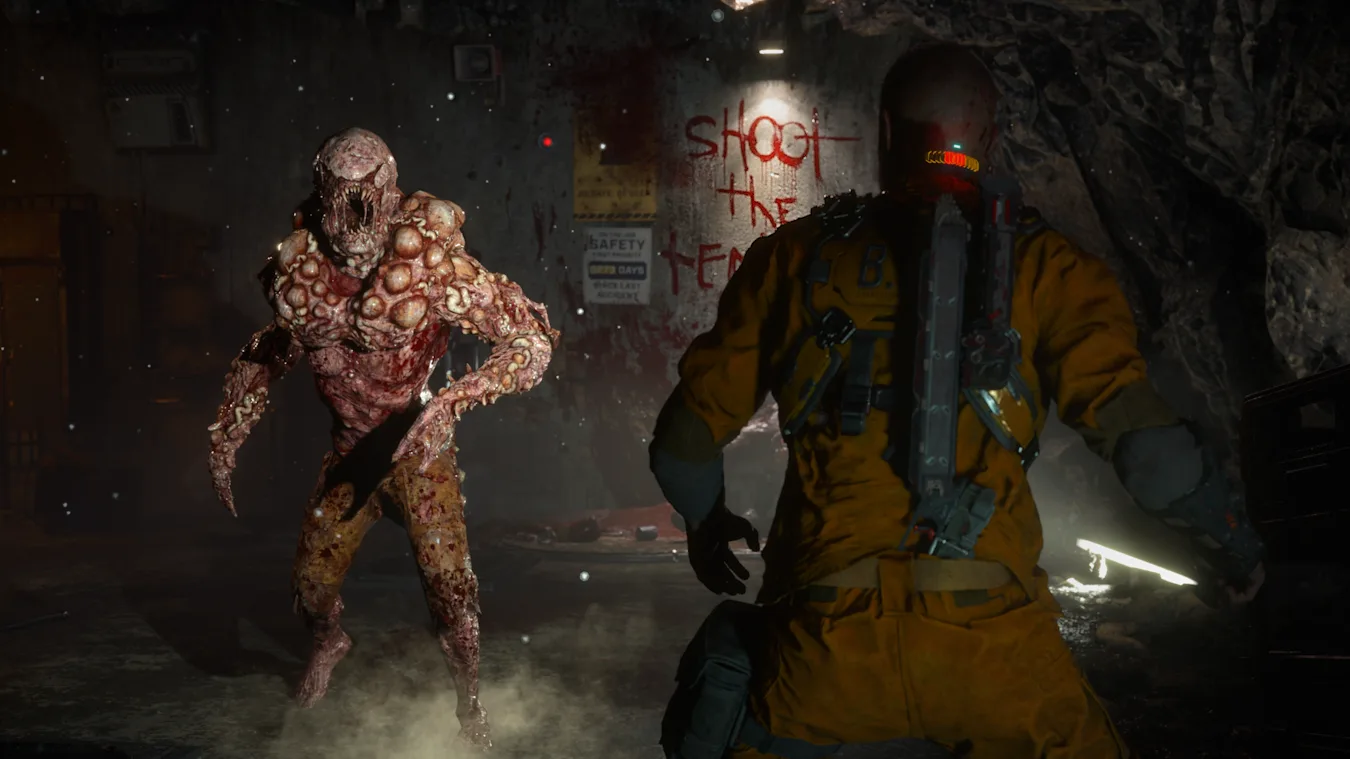It’s a strange feeling. The Callisto Protocol is a new game from a studio with zero releases to its name, but playing it feels like coming home. Its mechanics, environments and monsters are deeply familiar, unapologetically feeding off the immersive sci-fi horror concepts of Dead Space. While playing a preview of The Callisto Protocol on PlayStation 5, I was reminded of that scene from Wayne’s World where the boys are looking down on a film set that looks like Wayne’s basement, but it’s not actually Wayne’s basement, and Garth says, “Isn’t that weird?” They all agree it is.
Playing The Callisto Protocol, I found myself trapped in a world between old and new. Like I said, it was strange. However, once the weirdness wore off, playing The Callisto Protocol just felt good.
Callisto is the first game out of Striking Distance Studios, a team led by Dead Space co-creator Glen Schofield — so yeah, all the references are coming straight from the source. And there are plenty of similarities to go around: Callisto stars a lone space dude fighting through rooms of mutated humans; headshots are less effective than shooting extremities and tentacles; there’s no UI and the protagonist’s health is displayed on the back of his neck; stomping enemies is the best way to ensure they’re dead; there’s a gravity gun that functions like a kinesis ability; and the death screens are particularly gruesome. One early level even has a vignette with the phrase, “shoot the tentacles” scrawled across the wall in blood, riffing on the classic Dead Space blood tag that read, “cut off their limbs.”

Striking Distance Studios
I had the luxury of playing the Callisto Protocol preview just a week after trying out Motive Studio’s Dead Space remake, so the similarities stung sharply — but so did the differences. The Callisto Protocol does some things that Dead Space couldn’t, and it’s clearly a bigger game in a more complex world. Where the USG Ishimura in Dead Space often felt claustrophobic, the dead-moon prison colony in The Callisto Protocol feels vast and mazelike, with ladders, vents, long hallways, tight corridors and open laboratories with multiple access points for enemies, all of it overgrown with alien life.
The early game features a variety of enemy types — rushing monsters, tall spitters, leather-daddy tanks and invisible beasts with too many legs, to name a few — and they’re each difficult to kill in their own special ways. The twist is that all of the infected humans, or Biophage, will mutate in front of the player’s eyes when they’re not killed quickly enough, growing stronger in their evolved form. Enemy spawn points are not randomized, a fact that I discovered after dying a few times in a row in a single room. (The death screens are numerous and reach Mortal Kombat levels of brutality in the best possible way.)
All of these details result in a rich sense of strategy, with explodables, ammo drops and escape routes secreted around each combat area. Callisto is a video game for video game people, offering little actual direction while relying on the environment to communicate escape and attack opportunities — a suspiciously red canister in the middle of a long walkway, a ladder rung dangling just within reach, a box barely big enough to duck behind. Each detail blends smoothly into the futuristic surroundings, only standing out when a horde of Biophage are breathing down your neck.